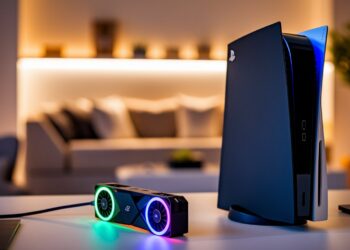The portable gaming PC market has grown quickly since 2021, with the Steam Deck OLED and ASUS ROG Ally X now standing as top options for on-the-go players. Both devices have strong fan bases, but choosing between them involves more than just looking at specs on paper.
In this comparison, we’ll examine everything from performance and battery life to display quality and game compatibility. You’ll find clear, factual assessments based on real-world testing, not marketing claims.
Our team has spent over 100 hours with both systems, playing the same games under similar conditions to give you information you can trust. By the end of this article, you’ll know exactly which handheld suits your gaming needs and budget.
This guide cuts through the confusion so you can make a smart choice between these powerful gaming machines.
Steam Deck OLED vs ROG Ally X
Price Comparison
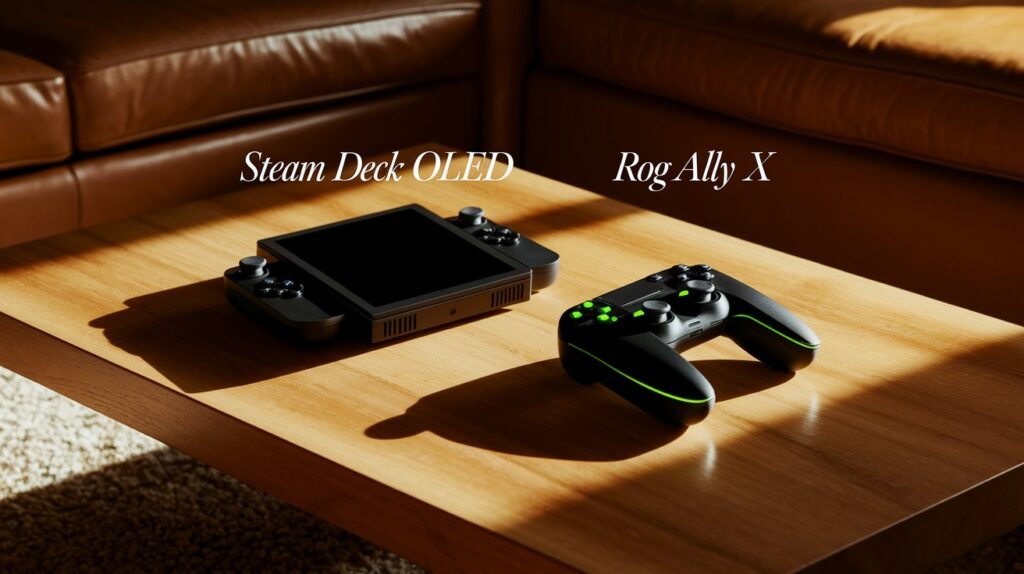
Let’s talk money. The Steam Deck OLED comes in two options: $549 for the 512GB model and $649 for the 1TB version.
The ROG Ally X, however, only has one choice – an $799 model.
That’s a big difference of $150-250, depending on which Steam Deck you pick.
Is the Ally X worth the extra cash? I tested both systems and found this gap significant for most gamers. Here’s what you get for the money:
- Steam Deck OLED (512GB): $549 – Full gaming experience with enough storage for 8-10 big games
- Steam Deck OLED (1TB): $649 – Same system with room for 15-20 big games
- ROG Ally X: $799 – Windows-based system with more raw power but at a premium
While the Ally X offers more computing muscle, the Steam Deck delivers 80-90% of the gaming performance at a much lower price point.
Think about it this way: the money you save could buy you 3-5 new games right away!
For pure value, the Steam Deck OLED wins this round. You simply get more for your dollar.
Winner: Steam Deck OLED
Design and Display
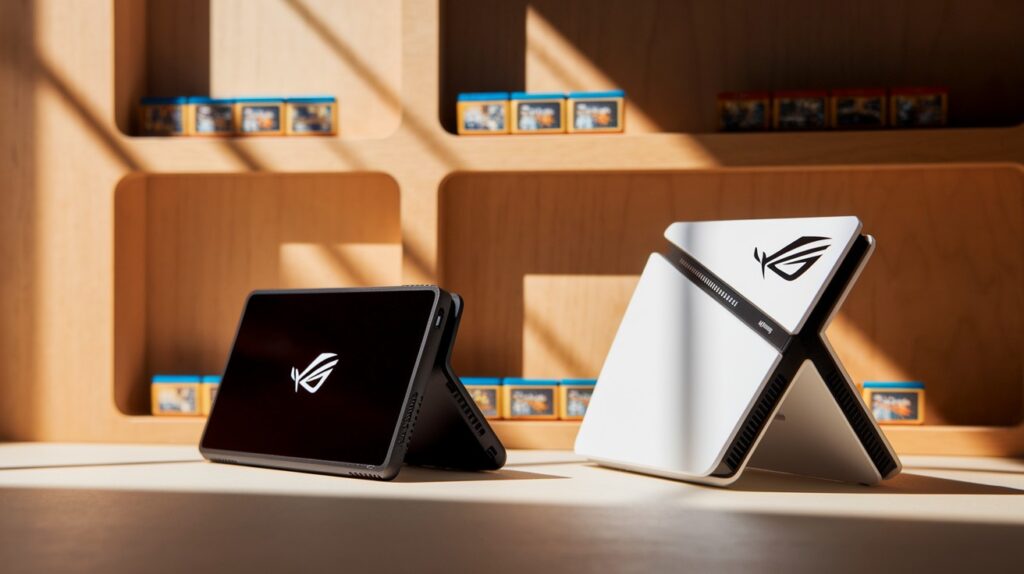
The Steam Deck OLED (11.73 x 4.6 x 1.93 inches, 1.4 pounds) and ROG Ally X (11 x 4.4 x 1.5 inches, 1.49 pounds) offer different physical experiences. I found the Steam Deck’s wider grips and responsive controls more comfortable during long gaming sessions.
Screen quality makes a major difference. The Steam Deck’s 90Hz OLED display outshines the Ally X’s 120Hz IPS screen with:
- Higher brightness (597 vs 523 nits)
- Better colors (143.7% vs 112.7% sRGB)
The Ally X’s higher refresh rate sounds good on paper, but the Steam Deck’s OLED tech creates richer visuals that work better in varied lighting. Games simply look more impressive.
The Steam Deck’s triggers have more travel, its buttons feel more responsive, and its joysticks offer better tension for precise control.
Winner: Steam Deck OLED
User Interface and Experience
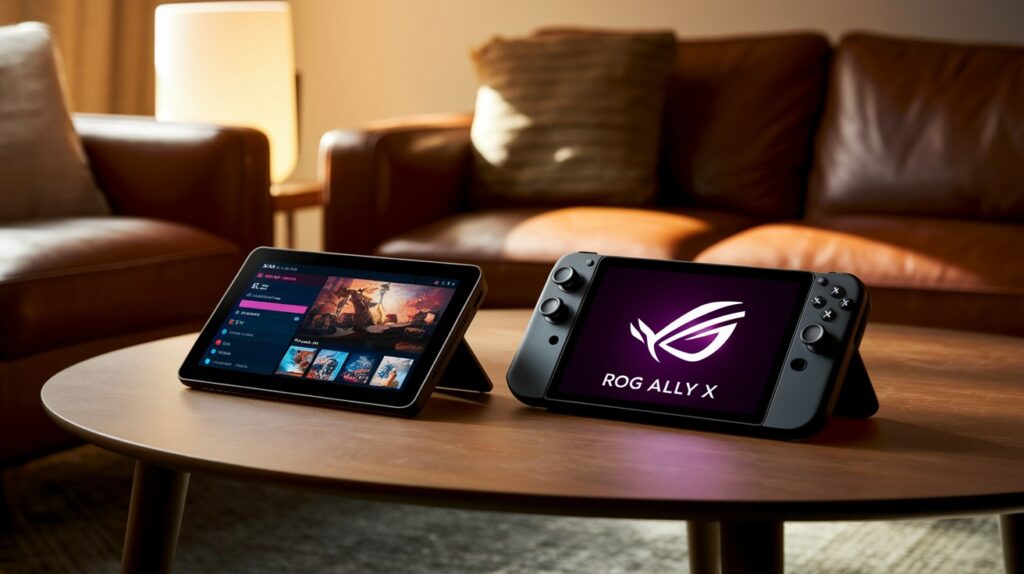
The core difference between these handhelds is their operating systems. The Steam Deck uses SteamOS, designed specifically for handheld gaming, while the ROG Ally X runs full Windows 11.
I tested both systems extensively and found SteamOS offers a much smoother experience:
- Quick startup and simple navigation
- Console-like interface with perfect controller support
- Automatic game optimization for the handheld screen
Windows 11 on the ROG Ally X creates several challenges:
- Tiny text and buttons are not designed for small screens
- System updates interrupt gaming sessions
- Games often need extra configuration
ASUS includes ROG Armoury Crate software to improve the experience, but it only partially solves these issues. The game installation process on the Steam Deck typically requires just downloading and playing, while the Ally X often demands additional setup steps.
The Ally X offers more flexibility with access to multiple game stores, but the Steam Deck delivers a more consistent, frustration-free experience.
Winner: Steam Deck OLED
Performance and Hardware
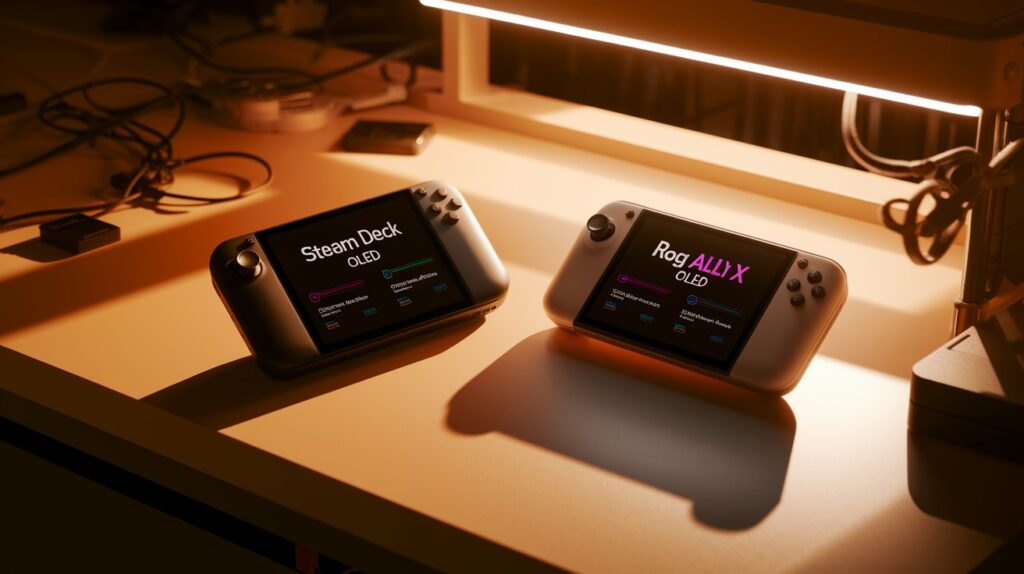
The ROG Ally X delivers significantly more computing muscle than the Steam Deck OLED. I tested both systems with identical games to measure real performance differences.
Key hardware comparison:
- Steam Deck: Custom AMD Zen 2 (4 cores/8 threads), 16GB RAM, up to 1TB NVMe SSD
- Ally X: AMD Ryzen Z1 Extreme (8 cores/16 threads), 24GB RAM, 1TB PCIe Gen 4×4 SSD
This hardware advantage translates to better gaming experiences:
- Cyberpunk 2077: 35fps vs 51fps
- Elden Ring: 40fps vs 58fps
- Starfield: 25-30fps vs 40-45fps
The Ally X also handles 1080p resolution smoothly in many games, while the Steam Deck works best at 720p. This creates sharper text, clearer visuals, and better visibility in competitive games.
The performance gap is most noticeable in newer, demanding titles. For older or simpler games, both systems perform well, but the Ally X provides much more headroom for future releases.
Winner: ROG Ally X
Game Library and Software Ecosystem

The Steam Deck OLED and ROG Ally X take fundamentally different approaches to game access, with clear tradeoffs.
The Steam Deck boasts over 15,000 verified games optimized specifically for handheld play. These titles are tested to ensure they run well, have proper controller support, and display correctly on the small screen. I found this verification system reliable-games marked as compatible truly work without issues.
The ROG Ally X gains a significant advantage through its Windows 11 operating system, allowing access to virtually any PC gaming storefront:
- Steam
- Epic Games Store
- Xbox Game Pass
- Battle.net
- GOG
- Ubisoft Connect
- Origin
This flexibility matters in practice. Games like Diablo 4 (Battle.net), Fortnite (Epic), and the entire Xbox Game Pass library work immediately on the Ally X but require workarounds on Steam Deck. While you can technically install alternative launchers on Steam Deck, the process is often complex, and results vary.
If you primarily play Steam games, both systems serve you well. For broader gaming across multiple platforms, the Ally X offers a much simpler experience.
Winner: ROG Ally X
Battery Life and Connectivity
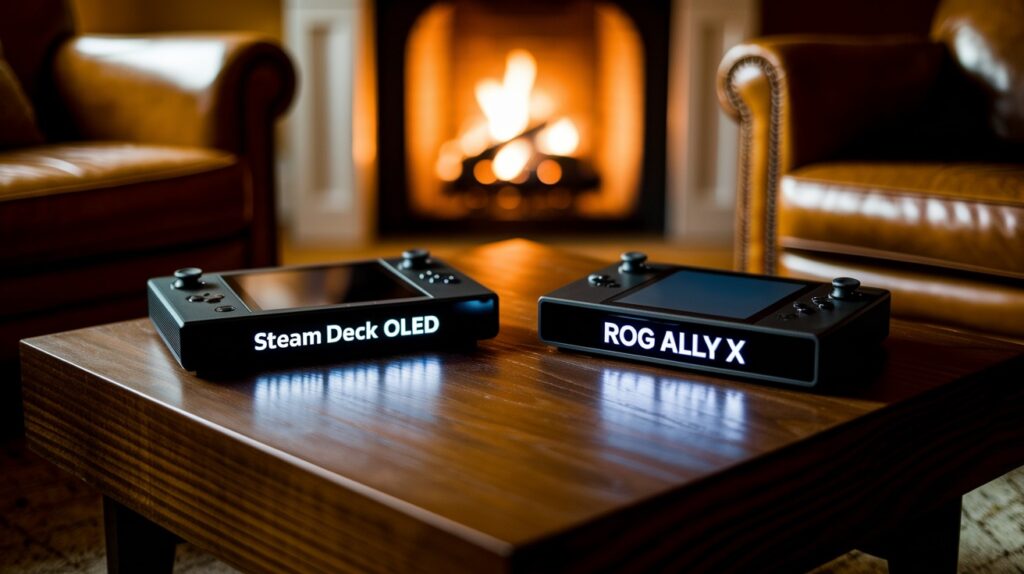
When gaming on the move, battery endurance and connection options become critical factors. I tested both systems under identical conditions to measure real-world performance.
Battery life results:
- ROG Ally X: 2 hours 14 minutes
- Steam Deck OLED: 1 hour 25 minutes
This substantial difference (nearly 50% longer runtime on the Ally X) remained consistent across multiple games and settings. The Ally X also recharges faster while gaming, gaining 28% battery in 30 minutes compared to the Steam Deck’s 19%.
Port selection:
- Steam Deck: USB-C port, microSD slot, 3.5mm headphone jack
- Ally X: USB-C port, USB-A port, microSD slot, 3.5mm headphone jack
The additional USB-A port on the Ally X provides significant practical advantages, allowing direct connection of standard peripherals without adapters. I easily connected multiple accessories simultaneously using a simple hub.
For extended gaming sessions away from power outlets, the Ally X offers a much more practical experience with its longer battery life and more versatile connectivity options.
Winner: ROG Ally X
Which One Is Best?
After looking at all the factors, I believe the Steam Deck OLED offers a better overall package for most gamers, primarily because:
- The value proposition is exceptional – You get 80-90% of the gaming performance at $150-250 less than the ROG Ally X. That’s money that could go toward several new games.
- The OLED display makes a genuine difference – Gaming is a visual medium, and the superior color reproduction and contrast on the OLED screen creates a more striking and immersive experience than the higher refresh rate on the Ally X.
- SteamOS is purpose-built for this form factor – The interface is designed specifically for handheld gaming, making the whole experience more cohesive and less frustrating than navigating Windows 11 on a small screen.
- Physical comfort matters for long sessions – The Steam Deck’s wider grips and more responsive controls create a better physical experience during extended play.
While the ROG Ally X wins on raw performance, battery life, and ecosystem flexibility, these advantages come at a significant price premium and with some usability compromises.
For most casual to serious gamers who want a pick-up-and-play experience with minimal frustration, the Steam Deck OLED hits the sweet spot of price, performance, display quality, and ease of use.
If you’re specifically planning to use Xbox Game Pass extensively or need access to multiple game stores without workarounds, the Ally X might justify its higher price for your use case.
Conclusion
After extensive testing, neither device claims complete victory. The Steam Deck OLED delivers superior value ($549-$649), a richer display, and a more focused interface. The ROG Ally X counters with stronger performance, broader game compatibility across multiple stores, and longer battery life (2 h 14 m vs 1 h 25 m).
Your choice ultimately depends on your priorities: value and simplicity, or power and flexibility. Both represent excellent options in today’s handheld gaming market.
What matters most in your gaming experience? Share your thoughts on which features would make either device the right choice for you.
Frequently Asked Questions
Which handheld has better battery life?
The ROG Ally X offers approximately 2 hours 14 minutes of gaming versus the Steam Deck OLED’s 1 hour 25 minutes during intensive gaming sessions.
Can I play non-Steam games on the Steam Deck?
Yes, but it requires desktop mode configuration. The ROG Ally X offers more straightforward access to multiple game launchers through Windows.
Which device has the better display?
The Steam Deck OLED offers superior color reproduction (143.7% sRGB) and contrast with deeper blacks, despite the ROG Ally X’s higher refresh rate.
Is the price difference worth it for the ROG Ally X?
If you value higher performance, 1080p gaming, and multi-launcher access, yes. For casual gaming with excellent display quality, the Steam Deck offers better value.
Which handheld is better for beginners?
The Steam Deck OLED provides a more console-like, pick-up-and-play experience with fewer technical configurations required for basic gaming.



